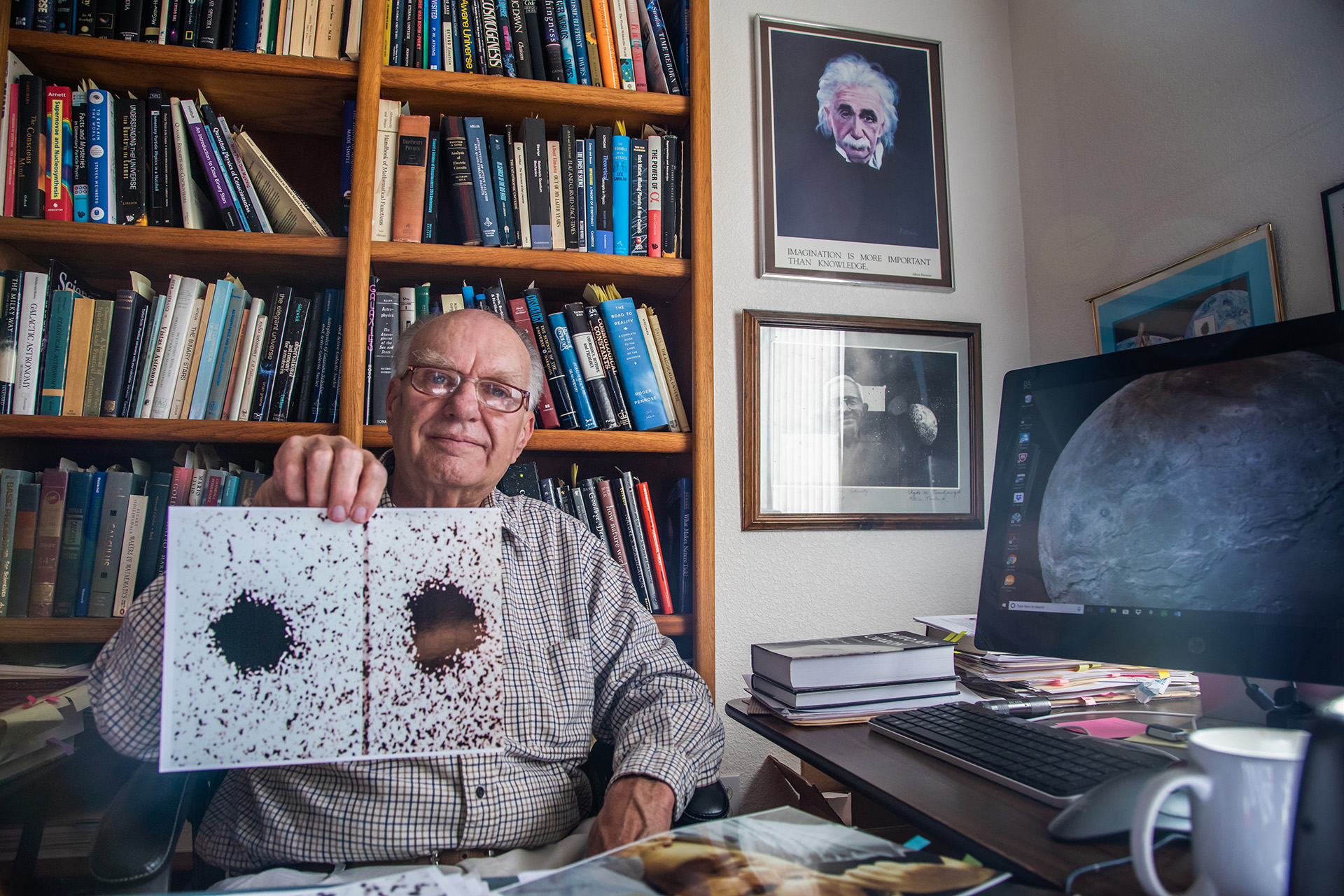Celebrating 40 Years of Pluto's Largest Moon, Charon
Today, Pluto is known to sport five moons. Its most massive companion, Charon, is the largest moon in the solar system relative to its parent body. This moon is so large that Pluto and Charon are classified as a binary planet system. Yet, 40 years ago, scientists didn't even know Charon existed.
In 1978, James Christy was using the telescope at the U.S. Naval Observatory in Arizona to refine Pluto's orbit. On June 22, the astronomer noticed a small bump on the side of the distant planet. When he examined other images, he noticed that the dot moved from one side to another, cycling back and forth over Pluto's 6.39-day rotation period. He figured that Pluto either had a natural satellite or boasted an enormous mountain that towered thousands of miles above the planet's surface.
Christy combed through the observatory's image archives to measure the angle where the elongation appeared. At the same time, his colleague Robert Harrington, also at the Naval Observatory calculated what the elongation should be if the bump was a moon. Their calculations matched, but the two researchers wanted to be sure. On July 2, 1978, new images showed the elongation right where it should be if the feature was a moon instead of a mountain. Christy and Harrington announced the discovery five days later. [Pluto and Charon Shine in Most Detailed Topographical Maps Ever]
Decades later, Charon's size and proximity helped the push to send NASA's New Horizons mission to Pluto.
"The importance of the discovery of Charon really cannot be underestimated," Alan Stern, New Horizons principal investigator from the Southwest Research Institute in Boulder, Colorado, said in a statement.
"We on the New Horizons team owe a big debt of gratitude to Jim Christy for his landmark discovery," Stern said.
Giving his wife the moon
By tradition, the person who discovered a moon gets to suggest a name for it to the International Astronomical Union (IAU). Christy wanted to name the moon after his wife. Though her full name is Charlene, friends and family call her "Char." Because he'd been thinking about protons and electrons, Christy added an "-on" and submitted the new name.
Get the Space.com Newsletter
Breaking space news, the latest updates on rocket launches, skywatching events and more!
While waiting for the proposal to be approved, Christy checked the dictionary. To his surprise, he found that Charon was the name of the mythological ferryman who carried souls across the river Acheron, one of the mythical rivers surrounding Pluto's underworld. The astronomer knew then that the moniker was a perfect fit for Pluto's companion.
"A lot of husbands promise their wives the moon," Charlene Christy said, "but Jim actually delivered."

Charon revealed
When the New Horizons spacecraft flew by Pluto on July 14, 2015, the probe revealed that Charon was an incredible world of its own. New Horizons researchers anticipated a monotonous world battered by craters. Instead, the spacecraft revealed giant mountains, vast canyons, a red polar cap, landslides and surface-color variations.
"Even if Pluto wasn't there, Charon would have been a great flyby target by itself," Will Grundy, a New Horizons science team co-investigator from Lowell Observatory in Flagstaff, Arizona, said in the statement. "It's a far more exciting world than we imagined."
Charon is scarred by a canyon four times as long as the Grand Canyon and twice as deep in several places. The rifts suggest a titanic geological upheaval in Charon's early history. They also reveal hints about what's happening beneath the surface, researchers said.
"That huge tectonic belt tells us Charon likely had an ocean under its surface, and as the ocean froze, the ice would expand and crack the surface," Cathy Olkin, a New Horizons deputy project scientist from Southwest Research Institute in Boulder, said in the statement. "That's an important finding, especially in light of the increasing scientific interest in ocean worlds across the solar system."
Charon's northern pole is colored red. Methane gas escaping from Pluto gets trapped and drawn to the pole by the moon's gravity, where it freezes. Ultraviolet light from the sun transforms the methane into heavier hydrocarbons, and eventually into reddish organic material known as tholins.
"Who would have thought that Pluto is a graffiti artist, spray-painting its companion with a reddish stain that covers an area the size of New Mexico?" Grundy said.
For Jim Christy, the 40-year evolution of our view of Charon from a small dot attached to Pluto to a world in its own right has been amazing.
"When you go from this little blur in which you don't actually see anything to the enormous detail New Horizons sent back, it's incredible," he said.
Follow Nola Taylor Redd at @NolaTRedd, Facebook or Google+. Follow us at @Spacedotcom, Facebook or Google+. Originally published on Space.com.
Join our Space Forums to keep talking space on the latest missions, night sky and more! And if you have a news tip, correction or comment, let us know at: community@space.com.

Nola Taylor Tillman is a contributing writer for Space.com. She loves all things space and astronomy-related, and enjoys the opportunity to learn more. She has a Bachelor’s degree in English and Astrophysics from Agnes Scott college and served as an intern at Sky & Telescope magazine. In her free time, she homeschools her four children. Follow her on Twitter at @NolaTRedd









